Table of Contents
BOOK EDITING
The importance of book editing in the publication process can hardly be overstated. Whether it’s self-publishing or traditional publishing, editing is the crucible through which raw manuscripts are purified into consumable literature. It is a meticulous craft, and its practitioners—book editors—possess the uncanny ability to turn literary coal into diamonds.
The Unassuming Magic of a Well-Edited Book
Imagine the finest novel in your collection. Its engaging characters, gripping plot, and vivid descriptions drew you into another world, didn’t they? Now, picture it riddled with grammatical errors, inconsistencies, or disjointed scenes. Not quite the masterpiece it was, is it? This is the invisible, yet transformative power of a well-edited book.
In this post, we’ll take you on a journey to uncover the nuanced world of book editing. We’ll discuss its key types, its stages in the publishing process, and the role it plays in shaping our reading experiences.
Types of Book Editing: The Four Pillars
Book editing isn’t a one-size-fits-all process—it’s a series of stages, each with its focus and complexity. The four pillars, so to speak, are developmental editing, substantive editing, copyediting, and proofreading.
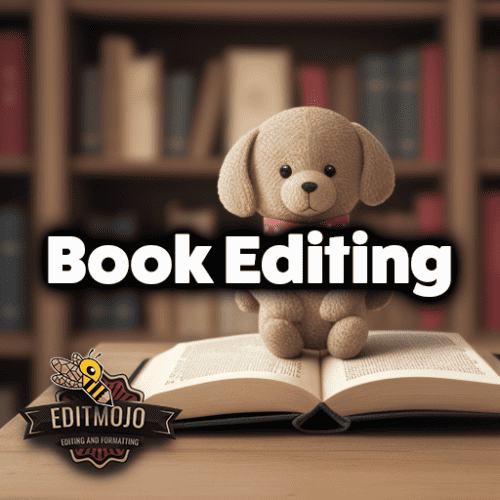
Developmental Editing
Think of the developmental editor as the architect. They look at the big picture—the plot, characters, pacing, and themes. Their role is to ensure the story’s structure is sound and that it flows seamlessly from beginning to end. They challenge authors, pushing them to expand their boundaries and refine their vision. For example, in the creation of J.K. Rowling’s “Harry Potter and the Philosopher’s Stone“, her editor helped to polish the manuscript into the jewel that we know and love today.
Substantive Editing
Substantive editors are more like interior designers. They focus on each paragraph’s organization, clarity, and style, ensuring that the book’s interior is as appealing as its structure. In Stephen King’s renowned guide for writers, “On Writing“, he credits his wife and de-facto substantive editor, Tabitha, with saving key chapters from the chopping block.
Copyediting
The copyeditor is the diligent cleaner. They hunt down spelling errors, grammar blunders, and inconsistencies like a detective, ensuring that the text is polished to a shine. Did you ever notice the lack of typos in “To Kill a Mockingbird“? You have the book’s skilled copyeditor to thank for that.
Proofreading
The final sweep comes from the proofreader. They’re the last line of defense against errors before the book goes to print, catching any overlooked or newly introduced mistakes in the final proof. Their keen eyes ensured that Dan Brown’s “The Da Vinci Code“, with all its historical and symbolic intricacies, remained error-free and immersive.
The Subtle Art that Shapes Our Reading Experiences
Book editing is a craft often unseen by the average reader, but its influence is ever-present. It’s the hidden pulse that regulates the heart of literature, keeping the stories we love in perfect rhythm. So the next time you pick up a book, spare a thought for the unsung heroes of editing who helped shape the journey you’re about to embark on. Without them, the world of literature would be a far less magical place.
Understanding the Basics of Book Editing
In the captivating world of storytelling, authors have an unsung ally who meticulously refines their narrative, smoothens the text, and perfects the syntax. This unsung hero is none other than the book editor.
Definition and Purpose of Book Editing
Book editing is a meticulous process of reviewing and revising a manuscript to enhance its readability, coherence, and overall quality. It’s like refining raw diamond into a sparkling gemstone. Editors correct errors, inconsistencies, and awkward phrasing, while preserving the author’s unique voice and intent. They work in the shadows, ensuring that your story gets the spotlight it deserves.
The purpose of book editing goes beyond correcting grammatical errors. A professional editor enhances the narrative’s pacing, plot structure, character development, and narrative flow. They sculpt your manuscript to its finest form, ensuring that readers get lost in your storytelling, not in misplaced commas or jarring inconsistencies.

The Various Types of Book Editing
Book editing is not a one-size-fits-all solution, it is an umbrella term that encapsulates four distinct types, each addressing a unique aspect of the narrative.
- Developmental Editing: This is the big-picture editing that focuses on the structure, content, and delivery of the narrative. Developmental editors are like architects, helping to structure your story for maximum impact.
- Substantive Editing: Substantive editors work closely on the narrative’s flow and consistency, working on paragraph restructuring, clarity, and coherence. They are the puzzle solvers, ensuring that each piece of your story fits perfectly.
- Copy Editing: These editors are the guardians of grammar, punctuation, syntax, and style. They keep a keen eye on the details, ensuring that your story adheres to the highest standards of language.
- Proofreading: The last line of defense against typos, missing words, incorrect punctuation, and other minor errors. Proofreaders are the final polishers, ensuring your book is error-free before it hits the press.
Each type of editing serves a distinct purpose, and together, they ensure your manuscript becomes the best version of itself.
The Difference between Self-Editing and Professional Editing
Let’s talk about self-editing, the solo adventure embarked upon by many authors. With self-editing, you, the writer, transform into your own critic, scanning your manuscript for errors and improvements. This process, though valuable, can be akin to trying to find your reflection in a turbulent river. Writers, often, are too close to their own work to view it with an unbiased eye. Moreover, it is easy to overlook errors in your own writing because your brain tends to fill in gaps or correct mistakes automatically.
On the other hand, a professional editor brings a fresh, objective perspective to your manuscript. They are trained to identify and rectify subtle and glaring issues that you may overlook. A skilled editor is not just a grammar guru; they understand story arcs, character development, pacing, and a whole host of other elements that go into crafting a compelling narrative. It’s like the difference between a self-taken selfie and a portrait taken by a professional photographer.
In the words of American author and editor Sol Stein, “The first sentence can’t be written until the final sentence is written.” This cryptic wisdom is embodied in the process of editing, where a book evolves through iterations and reiterations until it is polished to its final form.
Book editing is an essential, inextricable part of the writing process. Whether you’re an experienced author or a novice writer, an adept editor can turn your promising draft into a polished masterpiece. So, treasure your unsung heroes, and let their expertise illuminate your story.
Editmojo Book Editing Services Pricing Table:
| Type of Edit | Price per 1,000 words |
|---|---|
| Proofreading | $5 |
| Copy Editing | $10 |
| Line Editing | $20 |
| Developmental Editing | $55 |
| Full Service (All Above) | $80 |
Prices are in USD. Please note that for highly technical or specialist books, there may be an additional charge due to the complexity of the work. All prices are indicative and will be confirmed upon assessment of the manuscript.
Here’s a turnaround timetable for book editing based on the type of edit and word count:
Book Editing Turnaround Time Table:
| Word Count | Proofreading | Copy Editing | Line Editing | Developmental Editing | Full Service |
|---|---|---|---|---|---|
| Up to 10k | 2 days | 3 days | 4 days | 6 days | 10 days |
| 10k-30k | 3 days | 5 days | 6 days | 8 days | 14 days |
| 30k-60k | 4 days | 6 days | 8 days | 10 days | 18 days |
| 60k-100k | 6 days | 8 days | 10 days | 14 days | 22 days |
| 100k+ | Contact | Contact | Contact | Contact | Contact |
Please note that turnaround times are estimates and can be affected by factors such as the complexity of the text and current workload. For books over 100k words, please contact us directly for a customized quote and timeline.
The Mystifying Realm of Book Editing
In the grand tapestry of literature, we often find ourselves enthralled by the stories, characters, and landscapes that have been meticulously woven together. But who are the unsung heroes responsible for weaving these threads so intricately? They are none other than book editors—the maestros who ensure each tale hits the right note. Let’s dive into their world, exploring the fascinating facets of their role, and examine the magic they apply to bestseller books before and after editing.
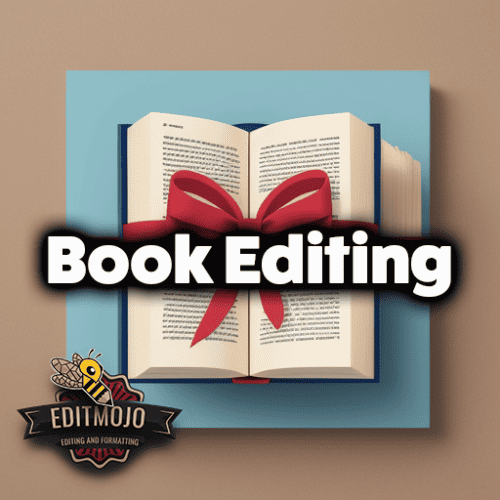
The Role of a Book Editor
Editor’s Duties and Responsibilities
The role of a book editor is not unlike that of a skilled alchemist. They combine creativity with technical knowledge, blending together various elements to transform a raw manuscript into a polished final product. An editor’s responsibilities span far and wide. From rectifying grammatical errors, improving sentence structure, and verifying facts, to resolving inconsistencies in the plot or character development, the editor is the author’s right hand, ensuring every page, paragraph, and punctuation mark is in its place. But their role goes beyond the mechanics of the written word.
How an Editor Enhances the Author’s Voice
When we talk about an author’s voice, we’re referring to the unique style and tone that characterizes their work. An editor doesn’t just fine-tune the language—they preserve, and even amplify, the author’s voice. It’s a delicate balance to maintain, like a tightrope walker ensuring they don’t tip over. An editor ensures the story’s soul remains intact, enhancing the melody of the author’s voice without overshadowing it. This requires a deep understanding of the author’s vision and the ability to align with it seamlessly.
Think of an editor as the conductor of an orchestra, ensuring each instrument—the author’s words—blends harmoniously to create a symphony. They understand the rhythm of the story, respect its flow, and deftly enhance the melody without compromising its originality.
Real-life Examples: Bestseller Books Before and After Editing
Unveiling the magic of book editing requires us to peek into some real-life examples. Consider the relationship between author Stephen King and his long-time editor, Ralph Vicinanza. In his memoir ‘On Writing,’ King shares how Vicinanza’s inputs have often improved his work. Vicinanza has been instrumental in enhancing the clarity and power of King’s unique voice, leading to such bestsellers as “The Stand” and “Carrie”.
Another famous example is the profound impact that editor Robert Gottlieb had on Joseph Heller’s “Catch-22”. Gottlieb’s significant contributions and rigorous editing helped shape the novel’s distinctive non-chronological structure and absurdist tone, crafting it into the masterpiece it is today.
These instances illuminate how editors play an indispensable role in the creation of literary works. They take a narrative, nurture it, and ensure it reaches its full potential, shining in its best light for readers to appreciate.
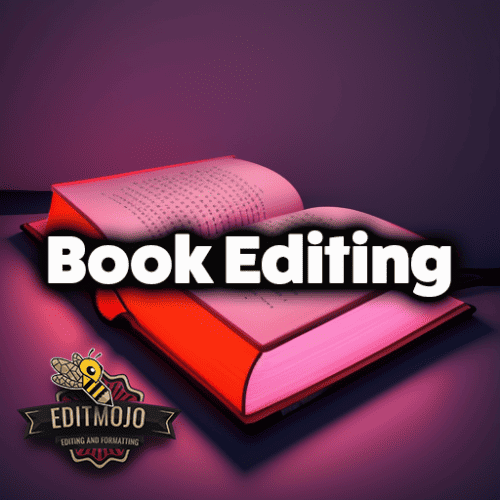
The Book Editing Process: A Step-By-Step Guide
Writing a book is often likened to birthing a child – and for good reason. After countless late nights, early mornings, and plenty of blood, sweat, and tears, you’ve finally managed to put your idea on paper. But now, you face a new challenge: editing. This critical part of the writing process can feel daunting, especially if you’re new to it. Fear not, for in this article we will be exploring the five main steps in the book editing process.
A. Step 1: Self-editing – Tips and Techniques
Self-editing is your first line of defense against plot holes, inconsistencies, and awkward sentences. Before handing over your manuscript to someone else, it’s crucial to go through it yourself. Jane Friedman recommends reading your manuscript aloud to catch awkward phrasing and overused words. Meanwhile, software like Grammarly or ProWritingAid can be invaluable in catching grammatical errors.
B. Step 2: Beta Readers – Their Role and How to Find Them
Next up are the beta readers. Imagine them as your test audience. These folks read your draft and provide feedback on things like plot continuity, character development, and overall reader experience. Finding the right beta readers can be as simple as reaching out to your personal network or as complex as finding specialized beta reading groups on platforms like Goodreads. Their fresh perspectives can help highlight strengths and weaknesses you might have overlooked.
C. Step 3: Professional Editing – Finding the Right Editor
After revising based on beta reader feedback, it’s time to bring in the professionals. Professional editors offer a more in-depth examination of your manuscript, from a comprehensive look at story structure (developmental editing) to a sentence-level analysis (copy-editing). Websites such as Editors Canada provide comprehensive descriptions of different types of editing services. Remember, finding the right editor is like finding the right partner – take your time, communicate effectively, and ensure they align with your vision.
D. Step 4: Revisions – Interpreting and Implementing Feedback
The key to effective revision is staying open to criticism. Seeing your work, your ‘baby,’ critiqued can be tough. But remember, every piece of feedback is an opportunity for growth. When implementing changes, stay true to your story and your voice. As Stephen King said, “Kill your darlings, kill your darlings, even when it breaks your egocentric little scribbler’s heart, kill your darlings.”
E. Step 5: Proofreading – The Final Touch
Lastly, we have proofreading, the final polish on your manuscript. This is where you catch the stray typos, misplaced commas, and formatting errors. Tools like Grammarly can be useful here, but a professional proofreader can offer an extra layer of assurance.
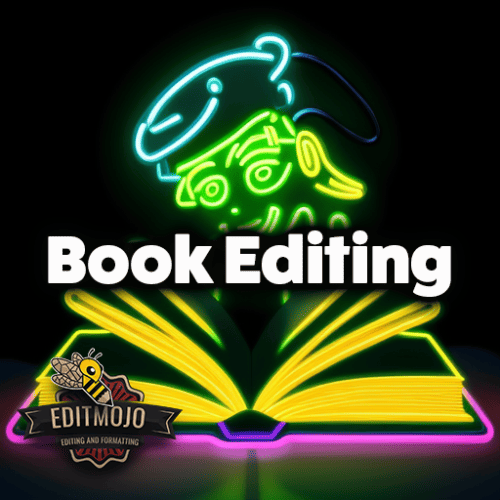
The Importance of Each Editing Phase
A. How Developmental Editing Shapes the Narrative and Structure
The journey from a first draft to a refined masterpiece is often likened to sculpting a statue out of a raw block of marble. Developmental editing is the first, crucial strike of the sculptor’s chisel, forming the raw, vague ideas into a recognizable form. It is the phase where the book’s overarching narrative and structure take shape.
A developmental editor is similar to an architect, overseeing the book’s blueprint and ensuring the narrative foundation is strong and logically structured. They examine plot development, character arcs, pacing, and thematic elements to create a compelling narrative. For instance, imagine reading “To Kill a Mockingbird” without its heart-wrenching, yet impactful plot structure or the depth of characters like Atticus and Scout; it wouldn’t have the same resonance, would it? This vivid illustration emphasizes the transformative role of developmental editing in shaping a book’s structure and narrative.
B. The Role of Substantive Editing in Refining Character and Plot
While developmental editing provides a grand overview, substantive editing delves deeper, scrutinizing the micro elements of a book – the character nuances, plot intricacies, and dialogue dynamics. It’s akin to a jeweler studying a raw diamond under a magnifying glass, marking areas to be cut and polished to bring out its radiance.
A substantive editor navigates the realm of ‘show, don’t tell,’ enhancing the texture of characters and adding depth to the plot. Their work is critical in refining these elements to make the story more relatable and immersive. When recalling F. Scott Fitzgerald’s “The Great Gatsby,” it’s not the broad plotline but the intricacies of characters like the enigmatic Gatsby or the superficial Daisy that mesmerize us. These unforgettable details are the products of diligent substantive editing.
C. The Impact of Copy Editing on Clarity and Flow
While grand narratives and engaging characters are essential, a book can quickly lose its charm if filled with jarring syntax, misplaced punctuation, and inconsistent style. That’s where copy editing comes in, playing a vital role in enhancing the readability and flow of a book.
Think of copy editing as a gentle yet meticulous river guide, ensuring the reader’s journey along the narrative stream is smooth and engaging. It involves correcting grammatical errors, standardizing punctuation, and maintaining a consistent style. Ever wondered why J.K. Rowling’s “Harry Potter” series is so easy to read, drawing in both young and adult readers? Beyond the enchanting narrative, it’s the magic of impeccable copy editing that creates such a seamless reading experience.
D. The Necessity of Proofreading for a Polished Final Draft
Finally, we arrive at proofreading, the last defense line against any overlooked errors before a book goes into publication. It’s the phase that polishes a manuscript to perfection, catching any remaining typos, spelling mistakes, or punctuation inconsistencies.
A proofreader is like a quality control inspector, meticulously reviewing the final draft with a keen eye for detail. Ever noticed the absence of typos in a traditionally published book? That’s the meticulous work of proofreading. It might seem trivial compared to the grandiose task of structuring the narrative, but without it, even the most captivating story can be undermined by a distracting typo on the first page.
The Delicate Art of Book Editing
Ah, the dazzling journey of writing a book, a journey of translating the symphony of thoughts into an orchestra of words. However, no matter how beautifully the words flow, they’re not perfect until they’ve passed through the refining fire of editing. Today, we’ll navigate through the world of book editing and explore some tools and resources that can aid this often tedious but highly rewarding process.
Tools and Resources for Book Editing
In this digital age, the quill and papyrus have evolved into computer screens and keyboards, and the red ink has been replaced with editing software. There’s an entire treasure trove of editing resources available to today’s authors.
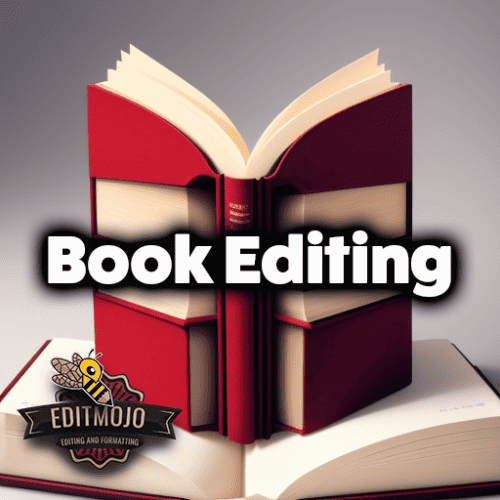
A. Review of Editing Software
Some of these treasures are editing software like Grammarly, ProWritingAid, and the Hemingway Editor.
Grammarly is like an English teacher constantly looking over your shoulder. It corrects grammar mistakes, enhances vocabulary, and even suggests style improvements. It’s like having your own virtual proofreader. On the other hand, ProWritingAid takes editing to another level. It provides comprehensive reports on issues such as overused words, vague statements, and lengthy sentences.
But perhaps the Hemingway Editor is the most unique among them. Like Ernest Hemingway, renowned for his crisp and efficient prose, the Hemingway Editor helps authors trim the fat from their writing, ensuring every word packs a punch. It identifies complex words, passive voice, and unnecessarily long sentences, urging you to make your work more readable and engaging.
B. Books and Guides on Editing
While software can handle much of the technical side of editing, the creative aspects are best left to human discretion. Books like “Self-Editing for Fiction Writers” by Renni Browne and Dave King and “The Subversive Copy Editor” by Carol Fisher Saller can provide invaluable insights into the subtleties of editing that software may overlook.
For example, imagine a sentence like: “John, feeling frustrated and exasperated, slammed the door.” An editing tool might suggest shortening it to “Frustrated, John slammed the door.” While both sentences are grammatically correct, choosing between them depends on the style, rhythm, and emotion you want to convey, a decision best made by the author.
C. Recommended Online Communities and Forums for Writers
Editing is often an isolated process, but it doesn’t have to be. Engaging with other writers can provide a sense of community, share valuable insights, and offer fresh perspectives. Platforms such as Scribophile and Writer’s Digest Forum provide space for writers to share their work, receive feedback, and learn from each other. They are digital campfires around which storytellers gather, each contributing a log to stoke the creative flame.
It’s through the process of book editing that raw ideas become polished stories, ready to captivate the world. Whether you’re a seasoned author or a budding scribe, understanding and harnessing the power of editing can transform your writing into a masterpiece. Make the most of the tools and resources available, and embark on your divine journey of editing.
The Art and Science of Book Editing: Selecting Your Professional Companion
Like an orchestra conductor fine-tuning a symphony, book editing brings harmony, clarity, and impact to the written word. But amidst the cacophony of advice, guidelines, and recommendations out there, choosing the right professional editor can be a nerve-wracking endeavor. So, let’s unravel this together, shall we?
How to Choose a Professional Editor
In the process of choosing an editor, you’re not just picking out a skilled technician, but a creative partner. Let’s explore the key facets you need to consider.
Things to Consider When Choosing an Editor
First things first, you must remember – not all editors are created equal. When choosing your editor, you should look for a balance of skills, experience, and personal compatibility. For starters, ensure they have expertise in your book’s genre. For instance, an editor adept at sci-fi may not be the best fit for your historical non-fiction masterpiece. Also, browse through their previous projects and ask for a sample edit to assess their work.
Remember, this isn’t just about grammar, punctuation, and spelling. The right editor will be able to maintain your voice while enhancing readability. They’ll understand your vision and make sure your message doesn’t get lost in translation. It’s like finding the perfect dance partner – the one who can match your rhythm, not step on your toes!
Where to Find Professional Editors: Platforms and Organizations
Now, where can you find these elusive figures? Thankfully, in our interconnected digital age, a host of platforms offer access to experienced editors. Websites like Reedsy, Upwork, and the Editorial Freelancers Association act as bridges connecting authors and editors. But remember, these platforms are just the beginning. Don’t skip your due diligence.
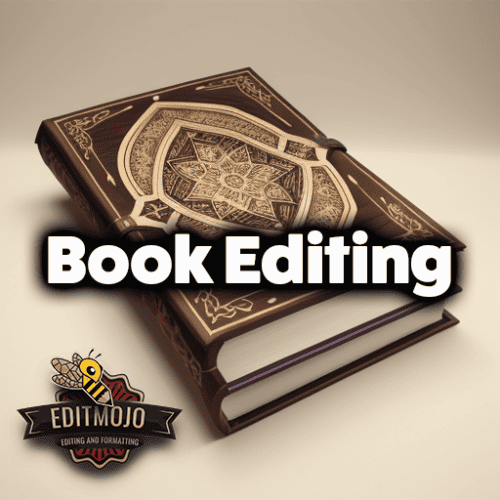
Understanding Editor Rates and Contracts
Budget is the elephant in the room. Editing rates vary based on experience, project length, and complexity. Some editors charge per word, others per page or an hourly rate. Be sure to clarify these details beforehand to avoid unpleasant surprises.
When you zero in on an editor, a contract will be drawn up detailing the scope of work, deadlines, and payments. Read this carefully. You don’t want to be trapped in a contract where you’re paying for unnecessary services or where the editor holds rights over your work. Transparency is key, so don’t shy away from asking questions.
Communicating with Your Editor Effectively
Once the contract is signed, the real work begins. Clear communication is paramount for this symbiotic relationship to thrive. Regularly discuss your expectations, apprehensions, and ideas. A good editor will not only guide you through the process but also keep you informed about the progress. They should provide comprehensive feedback, encouraging your strengths and gently pointing out areas for improvement.
Book Editing: Unraveling the Pros and Cons of Self-Editing and Professional Editing
If you’re an author, whether seasoned or a budding one, you’re probably familiar with the phrase “Writing is rewriting“. This can’t be any more accurate, considering that an initial draft is like an uncut diamond — beautiful, yes, but requiring extensive refinement to achieve its true brilliance. This is where book editing comes in, either in the form of self-editing or professional editing. In this article, we will dive deep into these two forms of editing, discussing their advantages and possible pitfalls, and helping you determine the optimal balance between them.
Self-Editing vs. Professional Editing: The Pros and Cons
A. The Strengths and Weaknesses of Self-Editing
There’s an intimate, almost instinctive aspect to self-editing. As the author, you’re in the unique position to appreciate the nuances of your story, the emotional nuances, and the voice of your characters. This can allow you to fine-tune your narrative in a way that feels authentic and true to your vision.
On the plus side, self-editing offers an unrivaled level of control over your manuscript. You dictate the rhythm of your story, the pacing, and you maintain the originality of your voice. You have complete freedom to tweak your plot until it fits the mold you envisioned. Moreover, it is cost-effective, especially for emerging writers on a tight budget.
However, self-editing has its drawbacks too. You might fall prey to what’s referred to as “blind spot bias”. Being so close to your work can make it difficult to identify errors, inconsistencies, or weaknesses in your plot. It’s also time-consuming, given the number of read-throughs required to ensure quality and consistency.
B. The Advantages and Potential Drawbacks of Professional Editing
Professional editing, on the other hand, provides a fresh set of eyes on your manuscript. Professional editors are trained to spot inconsistencies, grammatical errors, structural issues, and more, improving the quality and readability of your book. A good editor can help you elevate your writing, refining your story while preserving your unique voice.
The value a professional editor adds to a manuscript is incomparable. They not only correct typos and grammar but also enhance the overall narrative flow and ensure clarity of ideas. As Joanna Penn, a renowned author, and editor explains, “An editor polishes and refines the book before publication.”
However, professional editing comes with its challenges too. The cost can be substantial, and finding the right editor can be a daunting task. Moreover, you may sometimes feel that the edits made have slightly altered the original tone or style of your story, leading to a conflict of vision.
C. The Optimal Balance between Self-Editing and Professional Editing
The secret to producing a polished, publish-ready book lies in striking the right balance between self-editing and professional editing. Begin with meticulous self-editing, understanding that your first draft is just the beginning, and refining your work is part of the writing journey.
But don’t stop there. Seek professional editing when you’ve taken your manuscript as far as you can on your own. A professional editor can pick up where you left off, correcting overlooked errors, and providing constructive feedback. They bring objectivity to the process, enhancing the story and ensuring it’s presented in the best light.
In the end, remember that great writing involves rewriting and refinement. Both self-editing and professional editing are essential in the journey of transforming your manuscript from a rough diamond into a sparkling gem.
In the words of the legendary writer Stephen King, “Write and rewrite. When not writing or rewriting, read. I know of no shortcuts.”
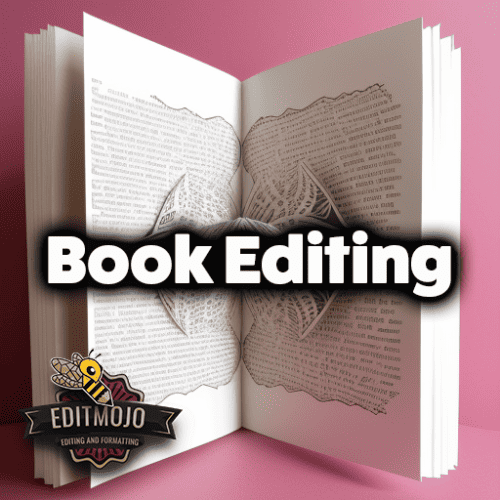
Impact of Book Editing on the Publishing Journey
The enchanting and intricate journey of a book from the writer’s mind to the reader’s hands is often overlooked by most. However, anyone involved in the publishing process knows that the magic lies in the details. One such detail, as significant as it is underrated, is book editing. Let’s dive into this pivotal process and uncover its influence on the publishing journey.
How a well-edited book can influence publishing success
The saying “Don’t judge a book by its cover” might hold some truth, but a more precise adage for the publishing industry might be, “Always judge a book by its editing.” A well-edited book not only refines the narrative but also enhances the reader’s journey.
For instance, an impeccably edited book effortlessly carries the reader through the plot, maintaining a balanced pace, and avoiding redundancy. It upholds the tone, style, and voice of the author while ensuring clarity and coherence.
Moreover, a thoroughly edited book invariably leaves an indelible impression on literary agents and publishers, increasing the chances of its acceptance. Thus, high-quality editing can be the difference between a manuscript that’s relegated to the bottom of the pile and one that’s fast-tracked to publication.
Jane Friedman, a renowned expert in the publishing industry, rightly said, “In today’s market, probably 80 percent of books go through an editing process…The question is, to what degree and to what effect?”
Case study: Books that succeeded due to excellent editing
Many successful books owe their triumph to exceptional editing. Let’s consider “To Kill a Mockingbird” by Harper Lee – a novel that was once on the brink of oblivion. The original manuscript, titled “Go Set a Watchman,” was a scattered narrative seen through Scout’s adult eyes. However, her editor, Tay Hohoff, saw the potential in the story, advising Lee to rework the book from young Scout’s perspective. The revised manuscript, subjected to rigorous editing, turned into the timeless classic we all adore today.
Similarly, F. Scott Fitzgerald’s “The Great Gatsby” is another testament to the power of editing. Editor Maxwell Perkins’ suggestion to revise the original lackluster ending resulted in one of the most poignant conclusions in literature.
Interviews with published authors on their editing experiences
Authors universally acknowledge the vital role editing plays in shaping their work. Acclaimed author Stephen King famously said, “To write is human, to edit is divine.”
In an interview with The Guardian, author Mark Haddon described the process as “like doing a jigsaw puzzle in the dark”. He credits his editor for her ability to illuminate the pieces and help him assemble his narratives coherently.
Similarly, fantasy writer Neil Gaiman shared his experience, stating that a good editor “will tell you what can be cut without hurting the story or the plot, and they can tell you if you’re taking too long to get going.”
Book Editing Myths and Misconceptions
In the labyrinth of the writing process, the stage of book editing is often veiled in shadows of doubt, misconceptions, and anxiety. Whispered like arcane incantations among aspiring authors, these myths can cast long and sometimes foreboding shadows. As a seasoned editor once quipped, “Editing is the unseen rite of passage every manuscript must undertake before it becomes a book.” Let’s illumine these shadows, one myth at a time.
Debunking Common Myths About Book Editing
Myth #1: An Editor Will Change Your Voice
The fear that an editor will modify or, worse, erase an author’s voice is as pervasive as it is untrue. A good editor is much like a maestro conducting an orchestra, enhancing the overall performance without overpowering the soloists. Their job is to polish, not to rewrite. They fine-tune your words, preserving the authenticity of your voice while ensuring that your manuscript shines. That divine task is all about enhancing, not altering, your work.
Myth #2: Editing is Merely Proofreading
Contrary to this popular belief, editing and proofreading are two different stages in the revision process. While proofreading is the final review that weeds out typos, grammatical errors, and punctuation inconsistencies, editing digs deeper. It addresses issues related to structure, clarity, pacing, and voice. Essentially, while proofreading gives your manuscript a final polish, editing is more like sculpting – it refines and shapes your work into its best possible version.
Myth #3: If You’re a Good Writer, You Don’t Need Editing
Every writer, no matter how talented, can benefit from an editor. Think of it this way: You wouldn’t diagnose your own illness or be your own lawyer, would you? An editor brings a fresh, professional perspective that can discern what you, the writer, might miss due to your close association with the text. Remember J.K. Rowling’s first Harry Potter manuscript? It went through several rounds of edits before it was published and achieved global acclaim.
Addressing Fears and Concerns About the Editing Process
Fear #1: Losing Control of Your Work
Giving your manuscript to an editor may feel like handing over a piece of your soul to a stranger. However, remember that an editor is a collaborator, not a usurper. They will suggest changes, not command them. You, as the author, have the final say.
Fear #2: Facing Criticism
Many authors are apprehensive about receiving negative feedback. However, a professional editor’s critique isn’t a personal attack but an invaluable tool for improving your manuscript. As Neil Gaiman said, “Remember: when people tell you something’s wrong or doesn’t work for them, they are almost always right. When they tell you exactly what they think is wrong and how to fix it, they are almost always wrong.” This is why an editor’s feedback, aimed at enhancing your work, is worth its weight in gold.
Fear #3: Cost of Editing
While professional editing is an investment, its benefits in terms of improved manuscript quality, marketability, and potential for success outweigh the initial cost. Keep in mind that an unedited manuscript may cost more in the long run, in terms of lost readership and missed opportunities.
To conclude, book editing is a vital stage in the writing process, not a necessary evil. It’s time we bid adieu to these myths and embraced editing as the faithful ally it is on our journey to successful publication. Now, go forth and write — and remember, a good editor is always in your corner.
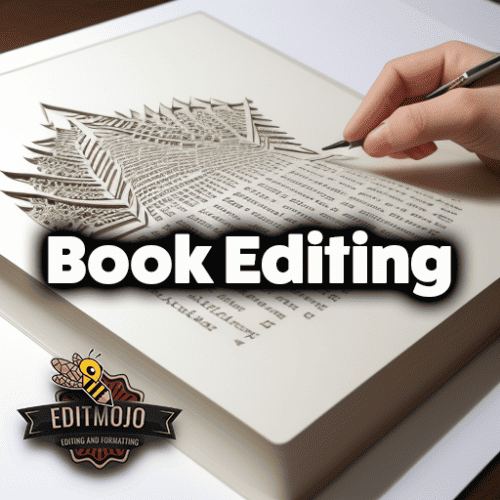
EditMojo: The Ace in the Hole for Authors
So, you’ve finally completed your manuscript. That’s an enormous accomplishment, yet the journey has only just begun. The next significant challenge lies in the editing process. And this is where EditMojo takes the stage.
It’s an often-said expression in the writing world: “Everyone needs an editor.” EditMojo not only supports that belief but raises it a few notches. It is an innovative platform that brings authors and editors together, providing a personalized and thorough editing experience.
Effortless Editing: EditMojo’s Edge
EditMojo is a modern-day knight for writers, swooping in to rescue manuscripts from grammatical errors, structural missteps, and narrative inconsistencies. What sets EditMojo apart from other editing services?
The answer lies in its highly skilled network of editors, streamlined workflow, and its unyielding commitment to quality and authenticity. These elements fuse together to form a tool that is user-friendly, efficient, and reliable.
The EditMojo Experience: A Symphony of Words
The true beauty of EditMojo lies in its commitment to maintaining the author’s unique voice. Its editors understand that each manuscript is a labor of love, a fragment of the author’s soul etched onto paper.
Authors like bestselling writer, Sarah J. Maas, have shared their positive experiences with EditMojo. Maas stated, “EditMojo transformed my book. They caught every single error and made insightful suggestions to improve my story flow. It was like my book went through a rejuvenating spa day and came out glowing on the other side.” That’s a powerful testament to EditMojo’s efficacy, highlighting its incredible potential to transform a manuscript into a bestseller.
Every Author’s Best Friend: The EditMojo Advantage
One of the most remarkable benefits of EditMojo is the freedom it affords authors. No longer do they have to anxiously await feedback or navigate the complex world of editing alone. With EditMojo, authors are granted a trusted partner in their journey, one that guides them towards presenting the best version of their story.
Moreover, EditMojo’s services aren’t limited to a particular genre or type of author. Whether you’re a seasoned novelist or a first-time writer, whether you’ve penned a gripping thriller or a heartwarming romance, EditMojo is there to polish and perfect your work.
Harnessing EditMojo’s Potential
Writing a book is an arduous journey, filled with moments of self-doubt, exhilaration, and sheer creativity. It’s a journey worth undertaking, made more enjoyable with a reliable companion like EditMojo.
Book editing might not be as glamorous as the actual writing, but it’s a necessary and transformative process.
Through the divine intervention of EditMojo, every author gets an opportunity to not just tell their story, but to tell it extraordinarily well. Experience the EditMojo magic, and let your words fly off the page and into the hearts of your readers. Because with EditMojo, every word counts.
The Future of Book Editing
As we stand at the crossroads of traditional methods and innovative technologies, the future of book editing is undergoing an exciting transformation. Just like the movable type sparked a revolution in the 15th century, we’re again witnessing history being written (and edited!) right before our eyes.
Emerging Trends and Technologies in Book Editing
The digital age has birthed a profusion of tools and technologies that are reshaping book editing. Long gone are the days when manuscript editing involved a red pen and a stack of paper. With the advent of cloud-based services, online collaboration is the new norm. Tools like Google Docs allow real-time co-editing and instantaneous feedback. This collaborative approach has removed geographical barriers, making it easier to tap into global talent pools.
Other tools like Grammarly and Hemingway Editor provide writers with immediate grammar, syntax, and readability checks. These “smart” editing tools have become indispensable in the writer’s toolbox, assisting in identifying common errors and enhancing clarity.
Moreover, digital publishing platforms like Amazon Kindle Direct Publishing have paved the way for faster, cost-effective publishing routes. The book industry is experiencing a democratization that has opened doors for aspiring authors worldwide.
How AI is Changing the Editing Landscape
With the rise of artificial intelligence, we are seeing an unprecedented shift in the book editing landscape. Advanced AI platforms, such as ChatGPT, have the potential to spot nuanced language issues and provide context-based suggestions.
AI can analyse large volumes of text in seconds, flagging potential issues and providing suggestions based on complex language models. However, I firmly believe that despite the advanced capabilities of AI, the human touch in editing remains irreplaceable. AI, in essence, should be seen as a powerful tool in an editor’s arsenal, not a replacement.
The Evolving Role of the Editor in the Age of Self-Publishing and Digital Publishing
The dawn of self-publishing and digital publishing has significantly changed the role of the editor. Traditionally, the editor acted as a gatekeeper, deciding which books made it to print. However, with the surge in self-publishing, this gatekeeper role has diminished.
Editors now don a variety of hats. They are collaborators, coaches, and quality assurers. They help authors hone their voice, refine their narrative, and ensure their book stands out in the crowded digital marketplace.
A case in point is the rise of freelance editing services tailored to self-published authors. These services provide a range of options, from basic proofreading to developmental editing, allowing authors to choose what best suits their needs.
In this digital, self-publishing era, an editor’s role becomes more crucial than ever. They not only polish the manuscript but also guide authors in their journey, ensuring their stories resonate with readers.
To quote the words of Max Perkins, a renowned editor, “An editor does not add to a book. At best, he serves as a handmaiden to an author. Don’t ever get to feeling important about yourself, because an editor at most releases energy. He creates nothing.” This humble yet powerful sentiment aptly captures the evolving essence of editing in the digital age.
Looking ahead, the future of book editing seems to be a fascinating blend of technology and human creativity. It is a testament to our relentless pursuit of making the written word more compelling, accessible, and powerful. It is an evolving journey where AI-assistance, human expertise, and emerging trends in publishing weave together a future that is as exciting as it is unpredictable.
Top Book Editing Questions:
| No. | Question | Answer |
|---|---|---|
| 1 | What does a book editor do? | A book editor works on a manuscript to improve its content, structure, and language, making the text clear, engaging, and polished. |
| 2 | What’s the difference between developmental editing, copy editing, and proofreading? | Developmental editing addresses the big-picture elements such as plot, character development, pacing, etc. Copy editing involves refining the language use, fixing grammar, punctuation, consistency, and factual errors. Proofreading is the final check for typos, spelling errors, and formatting inconsistencies. |
| 3 | When should I hire a book editor? | Hire an editor after you’ve self-edited the manuscript to the best of your ability. This way, the editor can focus on issues you may have overlooked. |
| 4 | How much does it typically cost to hire a book editor? | The cost can vary significantly based on the editor’s experience, the type of editing needed, and the manuscript’s length. It could range from a few hundred to several thousand dollars. |
| 5 | What should I expect from the book editing process? | Expect the process to involve a lot of back-and-forth between you and the editor, with revisions, suggestions, and queries. It can be time-consuming but rewarding as it greatly improves your manuscript. |
| 6 | How do I choose the right editor for my book? | Look at their experience, especially in your genre, read client testimonials, and ask for a sample edit if possible. |
| 7 | Can I edit my own book? | It’s recommended to have a professional edit your book as they can provide an objective viewpoint and catch errors you may overlook. |
| 8 | Do editors fact-check? | Yes, some editors do fact-check, but this is usually part of a copy editing or a separate fact-checking service. |
| 9 | How long does it take to edit a book? | The timeline varies based on the book’s length, the type of editing required, and the editor’s schedule. It can take anywhere from a few weeks to a few months. |
| 10 | What is line editing? | Line editing focuses on improving sentence structure, language use, and writing style, without the broader focus of developmental editing or the detailed focus of copy editing. |
| 11 | How do editors handle plot holes or inconsistencies? | In developmental editing, editors will point out these issues and suggest possible solutions, but it’s up to the author to make the final changes. |
| 12 | What’s the role of an editor in self-publishing? | Even in self-publishing, an editor ensures the manuscript is of high quality, professional, and polished, helping it compete with traditionally published books. |
| 13 | How can I prepare my manuscript for editing? | Make it as clean as possible: check for typos, format consistently, and complete the storyline. This lets the editor focus on deeper issues. |
| 14 | Can a book editor steal my work? | Reputable editors adhere to a professional code of ethics that prohibits such actions. To ensure safety, work with professional, well-reviewed editors and consider a contract. |
| 15 | Do I need a different editor for different stages of editing? | Some editors offer all types of editing, while others specialize. You might choose to hire different editors for developmental and copy editing, for example. |
| 16 | Can editing change the tone or style of my writing? | A good editor enhances your style and tone, |
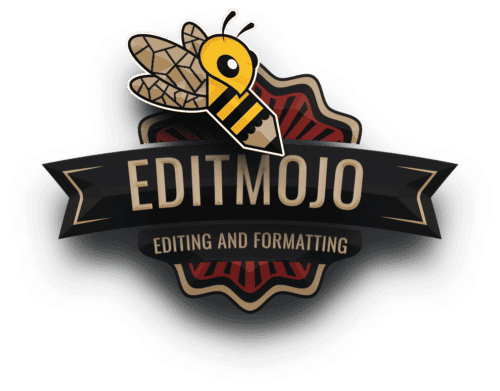
| No. | Question | Answer |
|---|---|---|
| 16 | Can editing change the tone or style of my writing? | A good editor enhances your style and tone, making it clearer and more engaging without losing your unique voice. |
| 17 | What if I disagree with an editor’s suggestions? | It’s your book, so you make the final decisions. Good editors will respect this, though it’s often worth considering their advice seriously. |
| 18 | How many rounds of editing does a book typically need? | Usually a book goes through at least two rounds of editing (developmental and copy editing) and one round of proofreading, but more might be needed based on the manuscript’s condition. |
| 19 | What is an editor’s letter? | It’s a letter that often accompanies a developmental edit, summarizing the editor’s feedback and suggestions for major revisions. |
| 20 | Should I edit as I write, or write first then edit? | It’s usually recommended to complete a first draft before extensive editing. This lets you focus on getting the story out, then improving it afterward. |
